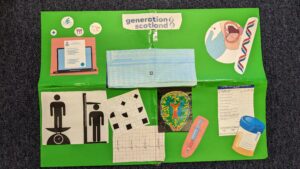Data journey – GP surgery to research study
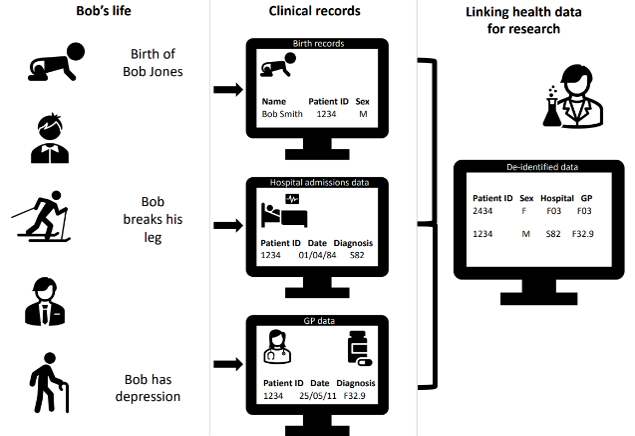
The following resources were used by data science researchers to describe how health information gets from GP appointments to research studies, and all the ethics, security, and anonymisation processes that take place in between.
We are happy for other people to use these resources, if you find them useful.
Coding Health Events
Emily used this handout to describe how individual events are coded into our GP and hospital records, and how data linkage can be used to bring these different records together, to create a more complete picture of his health.
Health events to health record [PDF]
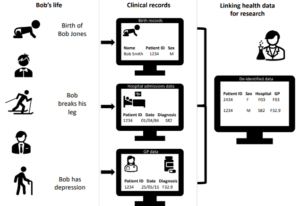
De-identification and combining
Mark Adams used this handout to talk about what researchers see, when they look at health record data.
Demystifying researcher view {PDF]
When researchers receive the data, it has already been de-identified (identifying details removed).
Each health event is coded as an individual item.
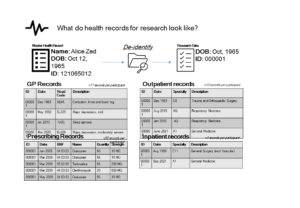
The researcher uses computer programs to combine them together. This creates a timeline of health events for each person (each line in this image is an individual person).
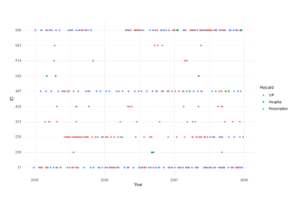
Data Access Permissions
At the very start of any project, a researcher must complete a lot of forms that ask them to state their research question, and what data they will need access to in order to answer it.
Ethics and other committees will check that what they are asking for is appropriate and will only give them the minimum amount of data required to answer that question. Part-way through, if the researcher thinks some additional data would be useful, they must go back to these ethics and other committees and ask for permission to receive it (It can take months to get this permission both the first time and for any subsequent changes/additions).
Xueyi Shen created a small flip book, to describe this process;
She also showed this flowchart of the data privacy and security process, which lists all the steps that researchers need to take.

Research Cohorts – SHARE and Generation Scotland
Iona Beange then described some of the research cohorts. These are people who have volunteered to share their health records for research.
One of the major advantages to researchers of working with cohort data, is that they (usually) receive a much more complete health record (rather than the very limited data described above). This is allowed because people have volunteered and explicitly given their consent to take part in research.
SHARE
The first was SHARE – The Scottish Health Research Register and Biobank. SHARE is a register of people, aged 11 and over, who are interested in participating in health research.
Participants agree to allow SHARE to look at their health records and use those to match them to potential health research studies. If a match occurs, people are invited to take part either from home or a local hospital.
SHARE Biobank: People can also opt to share their DNA data with SHARE (optional, but incredibly useful for health studies). If you agree, then the next time you get a routine blood test done by the NHS, a small amount of that blood will be saved and sent to SHARE for DNA sequencing.
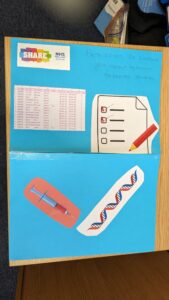
Generation Scotland
The second was Generation Scotland, who already have over 24,000 people from 7,000 families taking part.
When people join Generation Scotland, they agree that researchers can use their health record data. And most people also agree to share their genetic data.
Those who joined Generation Scotland at the early stages of the project had to come to the hospital and have lots of tests done (e.g. blood and urine tests and sometimes MRI scans). They also completed lots of questionnaires.
But if you join today, you can do it all from home – filling in your details and answering questionnaires on your computer/phone. Then you get posted a cheek swab kit – this is your DNA test.
Find out more at: https://genscot.igc.ed.ac.uk/
Once a member, your data will be used automatically, without you needing to do anything further.
However, if you agree to be re-contacted, you may be invited to fill in additional questionnaires or come to the hospital to take additional tests.
